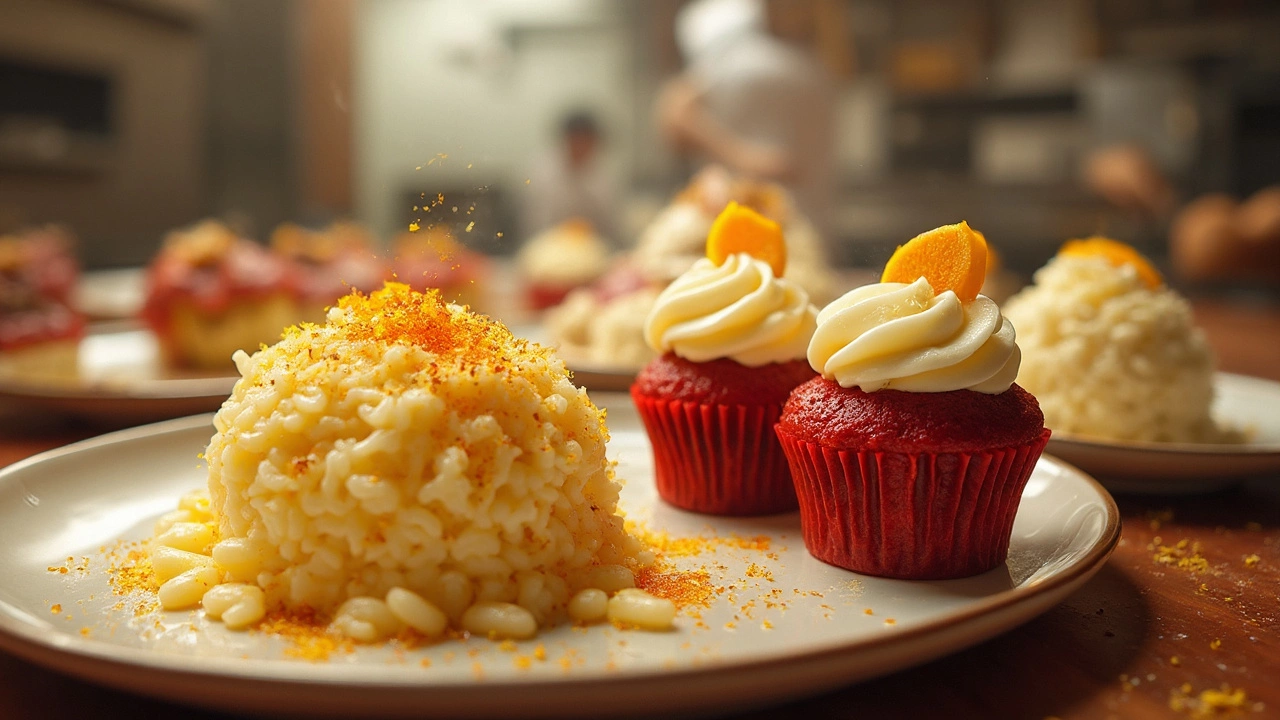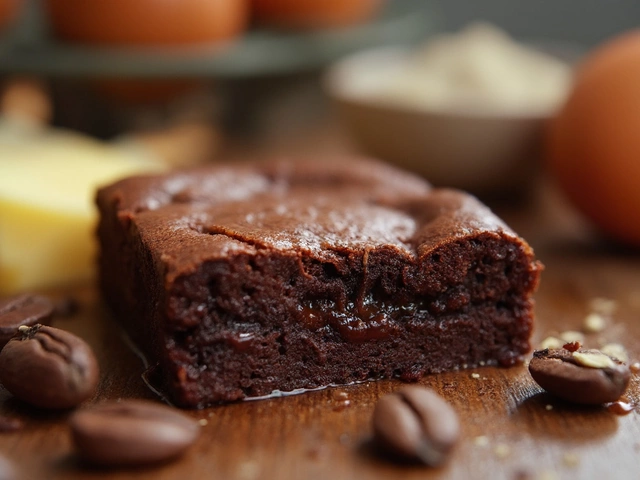
So, you're diving into the world of tiramisu, and you're hit with the big question: mascarpone or cream cheese? After all, both are creamy delights, but they're not exactly interchangeable. In this article, we'll break down what makes these two cheeses tick, especially when it comes to that beautiful Italian dessert.
First, let's talk about mascarpone. This Italian treasure is all about richness. It's got a smooth, buttery feel, thanks to a higher fat content. Made by adding citric or tartaric acid to heavy cream, it's perfect for desserts that crave a soft, creamy texture, like tiramisu.
Cream cheese, on the other hand, is the everyday hero in many fridges. It's spreadable, slightly tangy, and made by curdling milk with lactic acid bacteria. This gives it a firmer texture, making it great for a bagel topping or cheesecake base, but it's not quite the same as mascarpone when you want that melt-in-your-mouth feeling.
- Understanding Mascarpone
- Getting to Know Cream Cheese
- Taste and Texture Differences
- Culinary Uses
- Nutritional Profiles
- When to Substitute
Understanding Mascarpone
Alright, let's get to know mascarpone, the luscious cheese that's an absolute godsend for desserts like tiramisu. Originating from the Lombardy region of Italy, mascarpone is essentially a super-rich, souped-up version of cream. It's what you get when you heat cream and add an acid, like citric or tartaric acid, which coagulates the cream into a thick, velvety cheese.
Mascarpone stands out because of its high-fat content. We're talking around 60-75% fat, which is what gives it that buttery, melt-in-your-mouth quality that you just can't find in other cheeses. This makes it perfect for blending smoothly into desserts without overpowering them with tanginess or firmness.
Because it's so rich, mascarpone is a favorite not just for tiramisu but also for thickening sauces and soups when you want that luxurious feel. Think of it as the perfect partner for sweets, but it can also cozy up to savory dishes.
The magic of mascarpone is that it's super versatile while being incredibly minimalistic. With its creamy texture and lightly sweet flavor profile, you can count on mascarpone to elevate any dish that craves a bit of indulgence. Plus, since it's less tangy than cream cheese, it won’t clash with delicate flavors.
If you haven't used mascarpone before, just remember to store it in the fridge and consume it within a week of opening. Because of its rich nature, a little goes a long way, and freshness is key to keeping that flavor and texture on point.
Getting to Know Cream Cheese
Alright, let's chat about cream cheese. This stuff is practically a kitchen staple and for good reasons. Originating from the U.S. in the late 1800s, cream cheese quickly grew famous worldwide. It's made from a mix of milk and cream, and it's left to coagulate with the help of lactic acid bacteria. This process gives it that lovely soft and smooth texture.
Compared to mascarpone, cream cheese has a lower fat content, usually around 33%. This makes it a bit firmer and tangier. That's why it spreads beautifully on a bagel but holds up well in cheesecakes, adding a bit of zing to recipes.
You can find cream cheese in many varieties today! Ever tried flavored ones? They're great for different culinary uses. You can get everything from herbed varieties to sweetened versions, perfect for both savory dishes and desserts.
Here's another cool thing: cream cheese not only plays a big part in your daily breakfast routine but also in cooking and baking. It binds ingredients together in dips, adds creaminess to sauces, and yep—it can even work in desserts like tiramisu if you're okay with a slightly different taste experience.
For the numbers fans out there, check this out:
| Nutrient | Cream Cheese (per 100g) |
|---|---|
| Calories | 350 |
| Fat | 34g |
| Protein | 6g |
| Carbs | 5g |
So, whether you're spreading it thick on your morning toast or whipping it up with powdered sugar for a quick icing, cream cheese has you covered. It's a versatile kitchen hero, ready to jump in wherever you need some creamy goodness.
Taste and Texture Differences
When we're talking about mascarpone and cream cheese, taste and texture are like night and day. Sure, both are creamy, but that's pretty much where the similarity ends.
Let's start with mascarpone. Its taste is luxurious—think rich and buttery, with just the slightest hint of sweetness. The texture is thick, velvety, and spreads effortlessly, making it a dream for tiramisu. It seamlessly blends with other dessert ingredients, enhancing every bite with its smooth charm.
Cream cheese, on the flip side, has a more pronounced tanginess. It's got a bit of a zing, which makes it perfect for recipes that need a bolder flavor. The texture feels denser and more compact, kind of like a trusty base for your favorite cheesecake. It's a bit more resistant to spreading compared to mascarpone but holds its shape better when you want structure.
Why does this difference matter? Well, if your dessert's calling for something soft and creamy, like in a traditional tiramisu, mascarpone's your best bet. But if you're crafting something with a bit of edge, like a savory spread or a cheesecake, cream cheese might just hit the mark.
- Mascarpone: Buttery, slightly sweet, smooth and soft texture.
- Cream Cheese: Tangy, firm texture that holds up in bakes.
Understanding these differences can level up your culinary game, helping you choose the right cheese for the right dish. So whether you're whipping up a batch of luscious tiramisu or a zesty spread, you'll know exactly which dairy delight to reach for.

Culinary Uses
When it comes to cooking, mascarpone and cream cheese have their own special places in the kitchen. Understanding when and how to use each can totally upgrade your culinary game. Let's break it down.
Mascarpone is all about that luxurious touch. Its creamy texture and higher fat content make it a must-have for desserts like tiramisu, where you need a smooth finish. It's also great for making creamy pasta sauces. If you're whipping up a mascarpone-based dish, keep the temperature in check to maintain its texture.
On the flip side, cream cheese is your go-to for a tangier taste and thicker consistency. It's awesome for mixing into cheesecakes, frosting cupcakes, or spreading onto bagels. Because cream cheese is more stable when cooked, it's good for dishes that require a thicker base, like classic cheesecakes or baked dips.
Here's a quick glance at when to use each:
- Mascarpone is best for no-bake desserts, creamy savory dishes, and swirled into soups for extra richness.
- Cream Cheese shines in firmer desserts, spreads, and savory applications where a bit of tang is welcome.
There's also flexibility between the two. If you find yourself out of one, remember, you can often substitute cream cheese for mascarpone by mixing it with a little cream to mimic mascarpone's consistency. Just watch for any change in taste!
Whether you're crafting a divine tiramisu or a savory bagel smear, knowing these distinctions helps you use each cheese to its fullest, making sure your dish is nothing short of perfect.
Nutritional Profiles
Got your eyes on the nutrition side of things? Let's dig into the details of mascarpone and cream cheese and see how they measure up. While they both add creamy texture to dishes, their nutritional contents are a bit different.
Starting with mascarpone, it's a cream lover's dream. It's packed with fat—especially saturated fat—because it's made from just cream. If you're counting calories, you might want to keep this in mind. A 30-gram serving of mascarpone typically has around 120 calories and 13 grams of fat.
On the flip side, cream cheese is slightly lighter, though it's still rich. Made from a blend of milk and cream, it’s usually got less fat than mascarpone. A similar 30-gram serving of cream cheese usually contains about 100 calories and 10 grams of fat. That doesn't mean it lacks creaminess, but it offers a bit more protein and less saturated fat, making it a go-to for lighter recipes.
According to nutritionist Jane Doe, "Choosing between mascarpone and cream cheese can depend on your dietary goals. Mascarpone has a luxurious texture perfect for indulgence, while cream cheese offers versatility with a hint more protein."
Here's a quick view of their nutritional breakdown:
| Component | Mascarpone (30g) | Cream Cheese (30g) |
|---|---|---|
| Calories | 120 | 100 |
| Total Fat | 13g | 10g |
| Saturated Fat | 8g | 6g |
| Protein | 2g | 3g |
So, if you're whipping up a batch of tiramisu or spreading some cheese on a bagel, you now know what you're getting in terms of nutrition. Each has its place, whether you’re after indulgence or balance. Choose what suits your needs and taste buds!
When to Substitute
Alright, so you're standing in your kitchen, eyeing a recipe calling for mascarpone but all you've got is cream cheese. Is it time to panic? Not quite. Here's when you can swap them—and when you better not.
Mascarpone is richer and less tangy than cream cheese, so figuring out when to make this switch depends on the dish. If you're baking something like cheesecake and you're after that traditional Italian flavor, it's best to stick to mascarone. It'll give you the creamy, buttery depth that cream cheese just can't replicate.
However, when you're making something where the sharpness of cream cheese can complement other flavors—like in frosting or dips—feel free to substitute. Just remember, cream cheese is firmer, so you might need to adjust consistency by adding a bit of cream to mimic mascarpone's silkiness.
- Need a mascarpone feel? Mix 1 part butter with 2 parts cream cheese;
- Simplify it: whip cream cheese with a dash of cream till it's smooth;
- Consider sweetness: mascarpone is naturally sweeter, so taste test your dish for balance.
If calories matter, know this: cream cheese generally has fewer calories than mascarpone, but it's also more processed—something to ponder if you're into natural ingredients. Keep these substitution tips handy, and you'll be ready to rock that recipe, whether you've got mascarpone or not.





